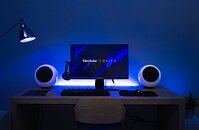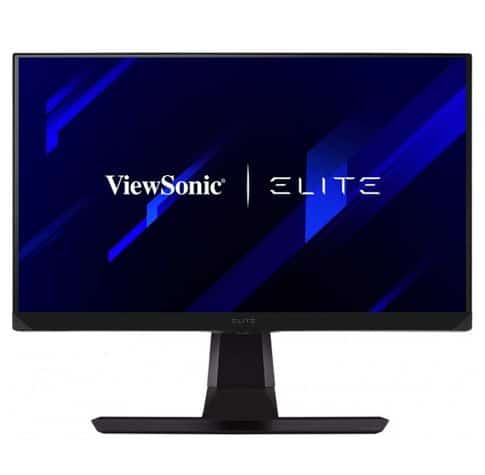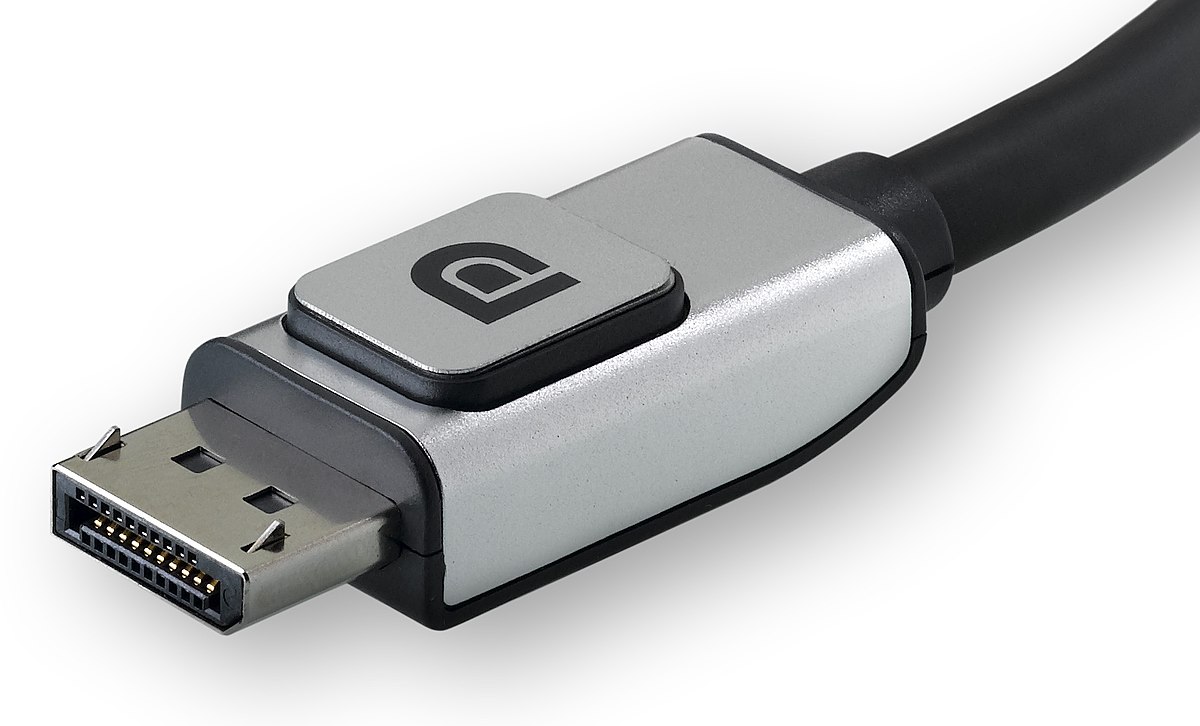- Joined
- Oct 9, 2007
- Messages
- 46,362 (7.68/day)
- Location
- Hyderabad, India
| System Name | RBMK-1000 |
|---|---|
| Processor | AMD Ryzen 7 5700G |
| Motherboard | ASUS ROG Strix B450-E Gaming |
| Cooling | DeepCool Gammax L240 V2 |
| Memory | 2x 8GB G.Skill Sniper X |
| Video Card(s) | Palit GeForce RTX 2080 SUPER GameRock |
| Storage | Western Digital Black NVMe 512GB |
| Display(s) | BenQ 1440p 60 Hz 27-inch |
| Case | Corsair Carbide 100R |
| Audio Device(s) | ASUS SupremeFX S1220A |
| Power Supply | Cooler Master MWE Gold 650W |
| Mouse | ASUS ROG Strix Impact |
| Keyboard | Gamdias Hermes E2 |
| Software | Windows 11 Pro |
A leading global provider of visual solutions, ViewSonic Corp., announces a new collection of ViewSonic ELITE 32" professional gaming monitors geared up with the latest display technologies. The new models allow gamers to experience next-level gaming with quantum-dot technology on the class-leading ELITE XG320Q monitor, extract the full potential of next gen consoles with the ELITE XG320U with HDMI 2.1 capabilities, or enter true cinematic immersion with the flagship Mini-LED-backlit ELITE XG321UG.
"At ViewSonic ELITE, we continuously seek to deliver high-end gaming monitors to suit every gamer from enthusiast to professional. While 27" monitors are typical for mainstream gaming, we recognized the demand for widescreens and expanded our 32" product line," says Oscar Lin, Head of Monitor Business Unit at ViewSonic. "Equipped with cutting-edge technologies to revolutionize the way gamers see, play, and experience games, the ELITE 32" monitor series deliver an immersive viewing experience alongside ultra-smooth gameplay and incredible color accuracy."

All monitors are packed with gamer-centric design features, its ELITE Design Enhancements (EDE) elevates the battlestation - from the ambient RGB LED light to create the perfect atmosphere and cable-drag-free mouse anchor to reinforced headphones hook for a clutter-free desk setup. Supported with TÜV-certified eye comfort, these monitors deliver marathon gaming sessions without the straining of eyes. Engineered with tilt, swivel, and height adjustments, the displays provide a wide range of movements for the ideal viewing position.
ELITE XG320Q: Realistic Colors with Quantum-Dot Technology
With the wildly-sleek ELITE XG320Q monitor, it is all about color, clarity, and speed. The 2K QHD Fast IPS display boasts hyper-accurate colors and high-contrasting details from quantum-dot technology. When hit with the LED backlight, each 'dot' or nanoparticle produces superbly precise color and deeper contrast for crisp, lifelike images.
The display is equipped with NVIDIA G-Sync compatible technology for an overclockable refresh rate of 175 Hz, delivering extremely smooth frame rates and a 0.5ms (MPRT) response time. Players can say goodbye to input lag, ghosting, and image stutter with PureXP Motion Blur Reduction capabilities, and enjoy fast-moving visuals in captivating detail.
ELITE XG320U: High Fidelity Console Gaming with HDMI 2.1 Connectivity
Designed for next-generation console gaming such as Xbox Series X/S and PlayStation 5, the uber-stylish 4K ELITE XG320U display includes a single-cable HDMI 2.1 connection that unlocks an unparalleled gaming experience. The XG320U supports 4K resolution with an expanded 99% Adobe RGB color gamut and lightning-fast overclockable 150 Hz refresh rate, making every landscape and battle sequence appear in pixel perfection.
Certified with AMD FreeSync Premium Pro, PureXP Motion Blur Reduction, a 1 ms (MPRT) response time, and Vesa DisplayHDR 600, this monitor allows gamers to surge through fast-paced FPS and action-adventure games at the highest visual settings.
ELITE XG321UG: Mini LED Backlight Technology
The 4K ultra-high definition ELITE XG321UG monitor utilizes industry-leading Mini-LED backlight technology, and is combined with 144 Hz refresh rate for ultra-low latency, stutter-free gameplay.
Key Features
ELITE XG320Q
ViewSonic ELITE XG320Q and XG320U monitors will be available worldwide in Q3, 2021. Later in Q4 2021, ViewSonic ELITE XG321UG will be made available worldwide.
View at TechPowerUp Main Site
"At ViewSonic ELITE, we continuously seek to deliver high-end gaming monitors to suit every gamer from enthusiast to professional. While 27" monitors are typical for mainstream gaming, we recognized the demand for widescreens and expanded our 32" product line," says Oscar Lin, Head of Monitor Business Unit at ViewSonic. "Equipped with cutting-edge technologies to revolutionize the way gamers see, play, and experience games, the ELITE 32" monitor series deliver an immersive viewing experience alongside ultra-smooth gameplay and incredible color accuracy."

All monitors are packed with gamer-centric design features, its ELITE Design Enhancements (EDE) elevates the battlestation - from the ambient RGB LED light to create the perfect atmosphere and cable-drag-free mouse anchor to reinforced headphones hook for a clutter-free desk setup. Supported with TÜV-certified eye comfort, these monitors deliver marathon gaming sessions without the straining of eyes. Engineered with tilt, swivel, and height adjustments, the displays provide a wide range of movements for the ideal viewing position.
ELITE XG320Q: Realistic Colors with Quantum-Dot Technology
With the wildly-sleek ELITE XG320Q monitor, it is all about color, clarity, and speed. The 2K QHD Fast IPS display boasts hyper-accurate colors and high-contrasting details from quantum-dot technology. When hit with the LED backlight, each 'dot' or nanoparticle produces superbly precise color and deeper contrast for crisp, lifelike images.
The display is equipped with NVIDIA G-Sync compatible technology for an overclockable refresh rate of 175 Hz, delivering extremely smooth frame rates and a 0.5ms (MPRT) response time. Players can say goodbye to input lag, ghosting, and image stutter with PureXP Motion Blur Reduction capabilities, and enjoy fast-moving visuals in captivating detail.
ELITE XG320U: High Fidelity Console Gaming with HDMI 2.1 Connectivity
Designed for next-generation console gaming such as Xbox Series X/S and PlayStation 5, the uber-stylish 4K ELITE XG320U display includes a single-cable HDMI 2.1 connection that unlocks an unparalleled gaming experience. The XG320U supports 4K resolution with an expanded 99% Adobe RGB color gamut and lightning-fast overclockable 150 Hz refresh rate, making every landscape and battle sequence appear in pixel perfection.
Certified with AMD FreeSync Premium Pro, PureXP Motion Blur Reduction, a 1 ms (MPRT) response time, and Vesa DisplayHDR 600, this monitor allows gamers to surge through fast-paced FPS and action-adventure games at the highest visual settings.
ELITE XG321UG: Mini LED Backlight Technology
The 4K ultra-high definition ELITE XG321UG monitor utilizes industry-leading Mini-LED backlight technology, and is combined with 144 Hz refresh rate for ultra-low latency, stutter-free gameplay.
Key Features
ELITE XG320Q
- 32" 2K QHD Vesa DisplayHDR 600 Fast IPS display
- Hyper-realistic colors from quantum-dot technology and 99% Adobe Color Gamut
- 165 Hz refresh rate overclockable up to 175 Hz and 0.5 ms (MPRT) response time
- NVIDIA G-Sync technology and PureXP Motion Blur Reduction
- 32" 4K UHD Vesa DisplayHDR 600 IPS display
- Expand gameplay onto next-gen consoles with single-cable HDMI 2.1 connectivity
- Brilliant, vibrant imagery from 99% Adobe Color Gamut
- Refresh rate of 144 Hz (overclockable to 150 Hz) and 1 ms (MPRT) response time
- AMD FreeSync Premium Pro technology and PureXP Motion Blur Reduction
ViewSonic ELITE XG320Q and XG320U monitors will be available worldwide in Q3, 2021. Later in Q4 2021, ViewSonic ELITE XG321UG will be made available worldwide.
View at TechPowerUp Main Site








